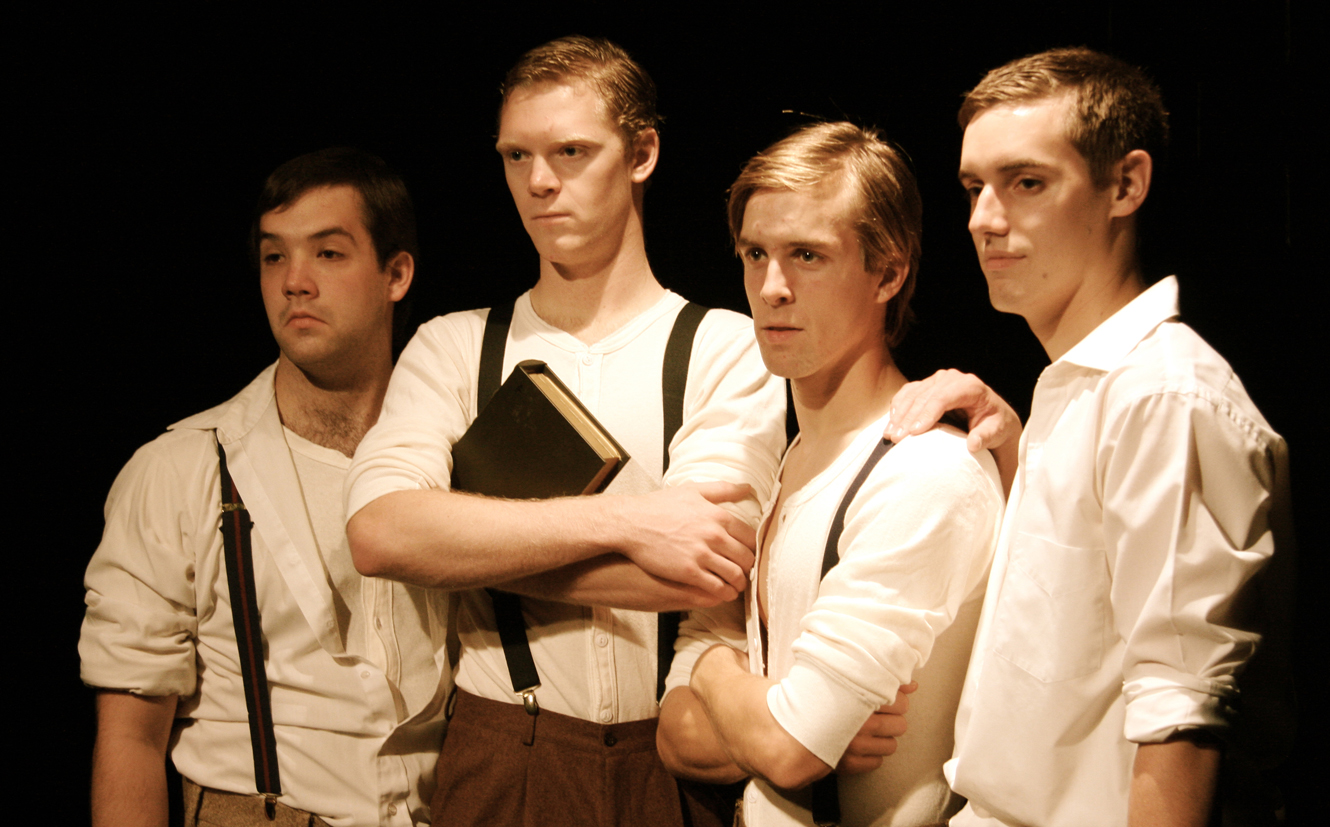Shakespeare provides the inspiration for the courses and shows offered by the theatre department this academic year. Arguably, his most notable play, Romeo and Juliet, is the model for the fall performance that will be presented at the end of this month.
Shakespeare’s R&J deviates from the original in some important ways, while still using the original words. “With the exception of a few lines in the beginning of the play, it is from Shakespeare,” Director Henry MacCarthy said. The dialogue is taken mostly from Romeo and Juliet; however, some is taken from Shakespeare’s sonnets and other plays.
The play is an adaptation by Joe Calarco. “He takes the original, but—and here is a big but—he suggests some sort of boarding school for men where Shakespeare is banned,” MacCarthy said. A group of students find a copy of Romeo and Juliet and as they read it they begin to embody the characters in the play.
The cast for Shakespeare’s R&J is quite small, with only four actors. Junior Sociology & Anthropology Major Ben Batz, Junior Theatre Major Benjamin Kolis, First-year Riley Lass and First-year Robert Ward are the students who star in the play.
“It is, of course, hard to say really what character any of us is playing, since all of the roles in Romeo and Juliet are distributed to either Student One, Two, Three or Four in Shakespeare’s R&J; we are each trying to come up with a clear character for whatever student we are playing, while each student is playing multiple characters in the play’s setting. We are playing characters who are playing characters,” Kolis said.
“This cast and crew is much smaller and much more cooperative than other casts I have worked with,” Ward said. This is one of the challenges and joys for the cast. The experience of putting this show on was not what Ward had expected. “As time went by, boundaries that I thought would restrict the freedom of the cast and crew disappeared,” Ward said.
“Since the cast is so small, there is no way an actor can be anything less that 100 percent engaged at all times, which is a rare opportunity to work closely with the director. I have really enjoyed working closely with McCarthy in the show, as well as the cast and crew,” Kolis said.
Every person involved with the show is necessary and an asset to the production. There has been a great deal of thought that has gone into every detail of the set, costumes, lighting and sound. The hats worn by the boys have been knit at Gustavus specifically for this show. “We are actually knitting our own caps, socks and ties … it will look as if parents supplied [these parts of the uniform],” Costume Designer Larissa McConnell said.
Ward and Kolis both are able to relate to the characters they portray on stage. “I feel like it is easy to forge a bond with all of Shakespeare’s characters; there is something primal about them. There is a reason that the Bard’s plays have been around for as long as they have—they appeal to something very basic about us as humans,” Kolis said.
The timelessness of Romeo and Juliet that Calarco adapts into R&J is especially timely now. “When I think of the story, I think of two people that love each other, but the world in which they live does not allow them to live that love. I think that is very similar … very relevant to our world today. Especially because of the things we have seen happening in recent months; where college kids have been put in a situation [harassment for homosexual preferences] and are forced to end their lives,” MacCarthy said. “The world forbids them to live their love, to share the love that they feel for each other. [There are] so many queer kids that are judged by people that feel threatened by who they choose to love.”
The relevance of this play in today’s society is just one reason to see R&J. Another is that those involved with the show are excited to share: “I can’t wait to show what we have worked on to an audience,” Kolis said.
Set in the 1920s, the show will be a new and interesting way to see and understand the age-old story. “I think that if people can separate themselves from the traditions and try to find meaning in the layers that we create in our production, they will find relevance in a way that maybe they haven’t before. I have faith that the audiences from Gustavus will be able to do that, but, even to me, it feels weird subverting the original,” Kolis said.
“I cannot wait to hear the audience’s reaction to certain parts of the play,” Ward said.
That opportunity will be available for four shows. On Oct. 28, 29 and 30 there will be an 8:00 p.m. show, and on Oct. 31 the show will begin at 2:00 p.m. Tickets for these shows are now available for purchase at (507) 933-7590, gustavustickets.com and at the SAO desk.
Don’t miss this opportunity to see what Kolis describes as “a show that has a completely different feel than shows past.”

Congratulation!